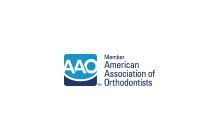Glossary of Orthodontics Terms

Anything the orthodontist attaches to your teeth to move your teeth or to change the shape of your jaw.

A metal wire which is attached to your brackets to move your teeth.
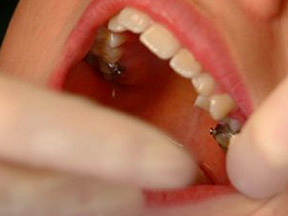
The process of cementing orthodontic bands to your teeth.

A metal ring that is usually placed on your teeth to hold on parts of your braces.

The process of attaching brackets to your teeth using a special safe adhesive.

A device used in orthodontics to align teeth and their position with regard to a person's bite. They are often used to correct malocclusions such as underbites, overbites, cross bite and open bites, deep bites, or crooked teeth and various other flaws of teeth and jaws, whether cosmetic or structural.

Brackets are the small metal or ceramic modules attached to each tooth. They serve as guides to move the teeth and hold the archwire in place.

A breakway is a small plastic piece with an internal spring which is used to provide force on a facebow.
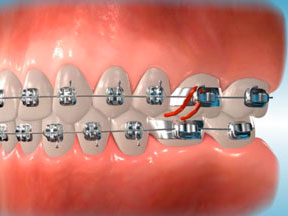
A small metal part that is welded on the outside of a molar band. The molar band contains slots to hold archwires, lip bumpers, facebows and other things your orthodontist uses to move your teeth.
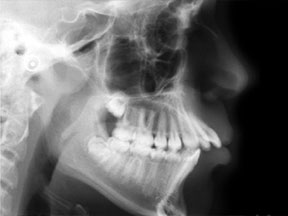
An x-ray of the head that shows if your teeth are aligned and growing properly.

A stretchable plastic chain used to hold archwires into brackets and to move teeth.

A meeting with your orthodontist where he/she discusses your treatment plan.
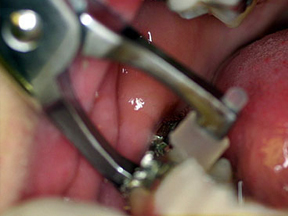
The removal of cemented orthodontic bands
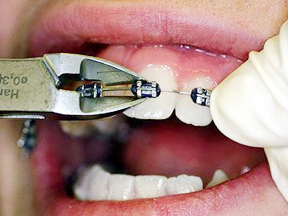
The removal of cemented orthodontic brackets.
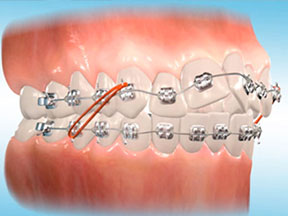
Elastics or rubber bands for braces help move the upper and lower teeth relative to each other, ultimately achieving a better bite. The orthodontic rubber bands are typically effective for correcting overbites, underbites, or other types of alignments of the jaw. They are also useful for moving a tooth out of alignment or to close a space in the mouth.
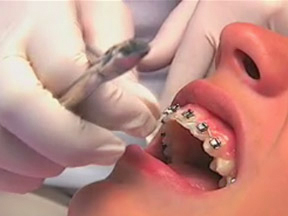
Do not occur very often, but if they do, your orthodontic office will respond quickly

Extractions of impacted or problematic wisdom teeth to make space for orthodontic treatment.
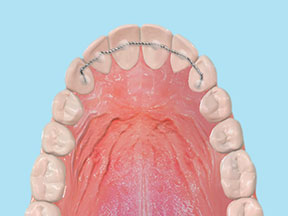
Fixed retainers consist of a metal wire bonded to the back of the teeth. Fixed retainers can stay in place indefinitely.

A removable appliance worn to restrict growth of the upper jaw and improve overjet problems. It normally consists of a facebow that attaches to the teeth and a strap that fits around the neck or head.

The first step in making a model of your teeth. You bite into a container filled with a rubber-type material. That material hardens to produce a mold of your teeth.
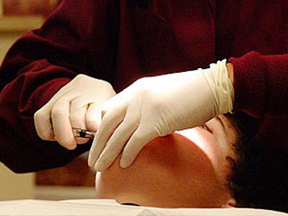
Orthodontic treatment that is usually done between the ages of 6 and 10. The objective of interceptive orthodontic treatment is to provide orthopedic intervention, so that later orthodontic treatment goes quicker and is less painful.
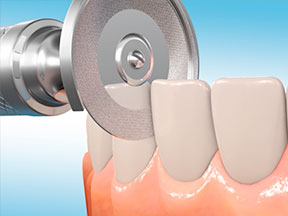
Interproximal reduction (IPR) is the removal of small amounts of outer enamel tooth surface between two adjacent teeth. It is a means to acquire additional space to create ideal tooth alignment. Alternative names include: slenderizing, stripping, enamel reduction, and reproximation.
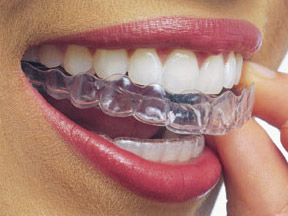
Invisalign is a series of clear, removable teeth aligners that both orthodontists and dentists use as an alternative to traditional metal dental braces.
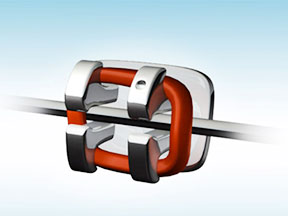
A small plastic piece, shaped like a donut, which is used to hold the archwires in the brackets on your teeth.
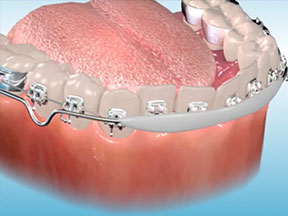
A lip bumper is used to push the molars on your lower jaw back to create more space for other teeth. The lip bumper consists of an archwire that is attached to a molded piece of plastic. You mound the archwire in the buccal tubes on your lower jaw, the plastic piece rests against your lips. When you eat or talk, you push the plastic piece back, which, in turn, pushes your molars back.
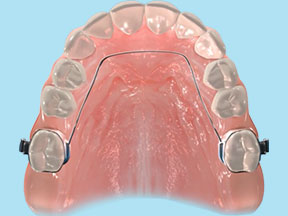
A lingual arch is an orthodontic device which connects two molars in the upper or lower dental arch.
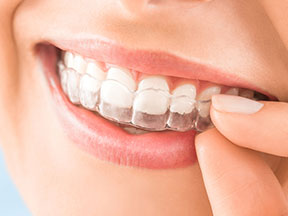
A device that is used to protect your mouth form injury when you are participating in sports. The use of a mouthguard is especially important for orthodontic patients, to prevent injuries.
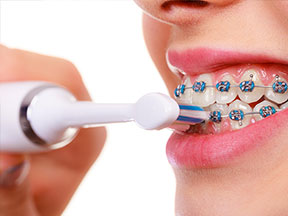
Effective brushing and flossing is one of the most critical actions needed from patients during braces. Regular visits to the general dentist for examination and cleaning are also essential. The results of inadequate oral hygiene include decalcification (white spots/marks), gingivitis (inflammation of the gums), and periodontal disease (inflammation leading to bone loss).
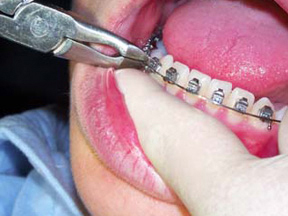
An evaluation of your progress where your wires may be changed to keep your treatment on track and moving forward.
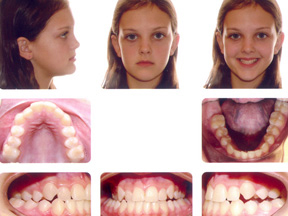
Pictures taken upon the completion of treatment show the amazing changes that the orthodontics has achieved in both growth and development of the teeth, jaws and aesthetics of the smile. The orthodontist uses the pictures throughout treatment to monitor changes
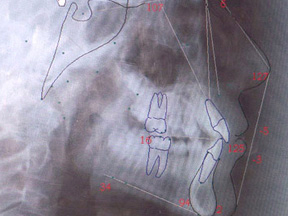
These records, which include cephalometric and panoramic x-rays, digital photos and study models, help your orthodontist determine what treatment needs to be done.
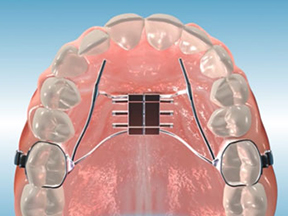
A palatal expander, also known as a rapid palatal expander, rapid maxillary expansion appliance, palate expander or orthodontic expander, is used to widen the upper jaw so that the bottom and upper teeth will fit together better.
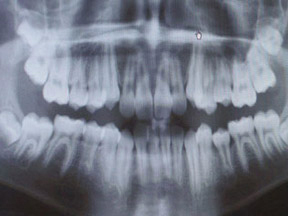
A x-ray taken by a machine that rotates around your head to give your orthodontist a picture of your teeth, jaws and other important information.
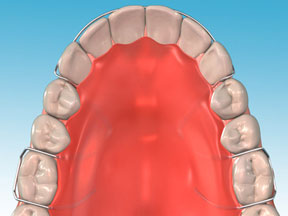
A gadget that the orthodontist gives you to wear after your braces are removed. The retainer attaches to your upper and / or lower teeth and holds them in the correct position while your jaw hardens and your teeth get strongly attached to your jaw. At first, you wear the retainer 24 hours a day, and then only at night.
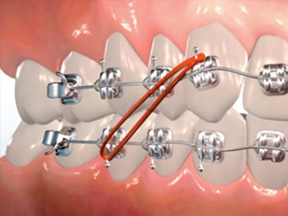
During various phases of treatment, small elastics or rubber bands are used as a gentle but continuous force to help individual tooth movement or the aligning of jaws.
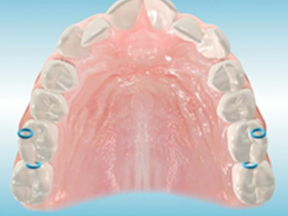
Separators are tiny rubber bands or springs that your orthodontist places between your back teeth. These separators prepare your mouth for braces by creating a small gap between these teeth. This space allows for the placement of a metal band around your molar, which anchors your braces in your mouth.

A clear wax used to prevent your braces from irritating your lips or cheeks when your braces are first put on, or at other times.

A clear wax used to prevent your braces from irritating your lips or cheeks when your braces are first put on, or at other times.


